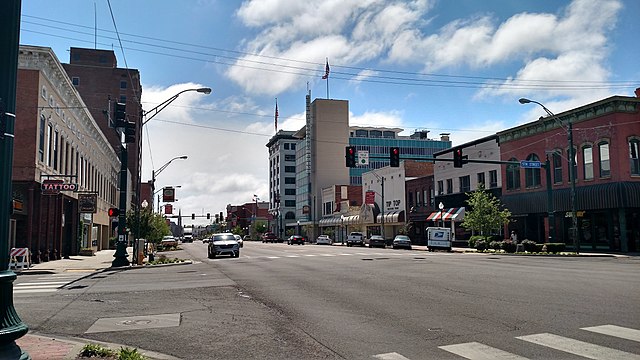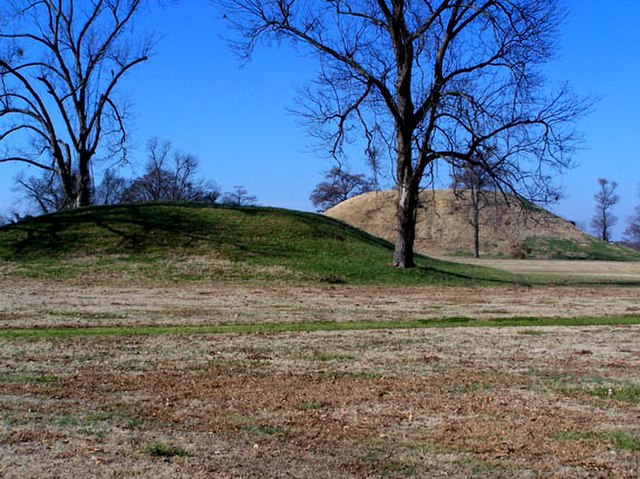Fort Smith metropolitan area
The Fort Smith Metropolitan Statistical Area, as defined by the United States Census Bureau, is a five-county area including three Arkansas counties and two Oklahoma counties, and anchored by the city of Fort Smith, Arkansas. The total MSA population in 2000 was 273,170 people, estimated by the Bureau to have grown to 289,693 people by 2007.
Downtown Fort Smith
Arkansas is a landlocked state in the South Central region of the Southern United States. It borders Missouri to the north, Tennessee and Mississippi to the east, Louisiana to the south, Texas to the southwest, and Oklahoma to the west. Its name derives from the Osage language, and refers to their relatives, the Quapaw people. The state's diverse geography ranges from the mountainous regions of the Ozark and Ouachita Mountains, which make up the U.S. Interior Highlands, to the densely forested land in the south known as the Arkansas Timberlands, to the eastern lowlands along the Mississippi River and the Arkansas Delta.
Platform mounds were constructed frequently during the Woodland and Mississippian periods.
Arkansas statehood, 100th anniversary issue; released on June 15, 1936, on the 100th anniversary of Arkansas statehood. The old state house is depicted at center, the fort surrounding the Arkansas Post at left with the present day state capitol building at right.
Lakeport Plantation, built c. 1859
Cannons at Battle of Pea Ridge site





